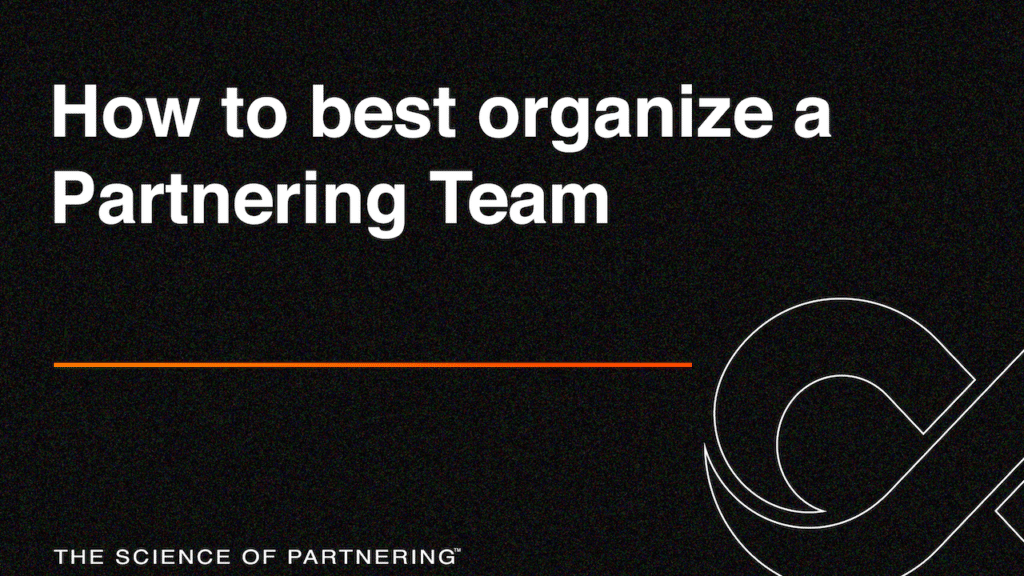When launching a new partnering team, you must first decide how your Partner Development Leaders (PDLs) will engage your partners. There are two common approaches to consider. The first is what I call the “Lone Ranger” and the second is the “Hunter/Farmer.” The best approach will depend on the maturity of your partnering initiative(s) and the skill set of your PDLs.
In the Lone Ranger approach, the PDL owns each partnering initiative from start to finish. That is, the PDL helps build the growth engine strategy, recruit partner candidates, negotiate agreements, and ultimately manage each partnership to success.
The Lone Ranger approach is commonly used in highly innovative partnering initiatives where a “recipe for success” has not been developed. In these scenarios, seasoned PDLs tackle new initiatives as “one-offs” to create the desired value-add or manage a pilot program to build a comprehensive process to operationalize the partnering program for scale. The Lone Ranger approach is also popular among small organizations that lack the manpower to bifurcate the roles.
When I served as a PDL for a Fortune 100 company, our partnering initiatives were highly innovative and our PDL’s domain expertise was quite deep, so we exclusively used the Lone Ranger approach. Although this path limits the number of partners a PDL can manage, efficiencies are gained by having deep domain expertise and streamlining communication by using fewer people. These important efficiencies accelerate the time to revenue for new programs. And this approach allows for a “partner management blueprint” to be created for programs that eventually need to be scaled.
In the Hunter/Farmer organizational model, the end-to-end partner management is split between two work functions. The Hunter owns the front-end tasks which include researching, evaluating, and negotiating agreements with partner candidates. A second PDL comes into the fold, generally at the Term Sheet phase, to assist with the partnership initiative and prepare to assume the day-to-day ownership of the relationship.
In the Hunter/Farmer approach, the Hunter is the more senior PDL and she is responsible for all contracting tasks, including the initial agreement and any future contractual changes (amendments) that may arise. The Farmer, on the other hand, works exclusively as the executor of the partnership agreement. Her focus is on executing the vision of the partnership, so value is created for all entities.
The Farmer role can be a great place to launch a new career in partnerships. This role requires less expertise than the Hunter as the tasks tend to be more linear and prescriptive. Sales partnership programs are the most likely place to find the Hunter/Farmer approach in action. These programs typically require scale, and they are focused on driving operational excellence within a linear path from contract execution to perpetual results.
One common landmine that we see when organizations attempt to execute the Hunter/Farmer approach is fumbling the handoff. When using this approach, the PDLs must find the delicate balance between introducing the Farmer early enough so rapport and continuity are established, but not so early that time is wasted if the deal falls apart and it isn’t executed. One thing is certain, introducing the Farmer prior to the contract being signed is imperative!
I typically recommend the Farmer be introduced to your partner candidate towards the end of the Term Sheet phase. This approach will allow both parties to understand the desired terms of the deal, so a smooth transition occurs after the agreement is signed. Even if certain terms are left out of the written agreement, by involving the Farmer in the Term Sheet phase, your PDL will be aware of the value points their future partner desires. The only way value can be provided is if your PDL understands the value your new partner desires.
All too often, a poor transition occurs between the people who negotiate a deal and the people charged with executing the deal. Positive momentum is a strategic partnership’s best friend. Poor transitions kill momentum right from the start which leads to a turbulent launch. The best Hunter/Farmer teams provide a seamless transition that allows your new partnership to accelerate because momentum was never lost.


